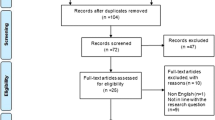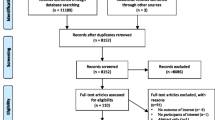Abstract
Almost every national and supranational health policy document accords high importance to the need to listen to and ‘empower’ patients. The relationship between pharmaceutical policy and the lay public is not direct but mediated by several actors, including health care workers, patient organisations, industry and, most recently, the media. Although the overall aim of health and pharmaceutical policy is to address the needs of all citizens, there are only a few, well organised groups who are actually consulted and involved in the policymaking process, often with the support of the industry. The reasons for this lack of citizen involvement in health and pharmaceutical policymaking are many, for example: there is no consensus about what public involvement means; there is a predominance of special interest groups with narrow, specific agendas; not all decision makers welcome lay participation; patients and professionals have different rationalities with regard to their views on medicine. Because the lay public and medicine users are not one entity, one of the many challenges facing policy makers today is to identify, incorporate and prioritise the many diverse needs. The authors recommend research which includes studies that look at: lay attitudes towards pharmaceutical policy; lay experiences of drug therapy and how it affects their daily lives; the problem of identifying lay representatives; the relationship between industry and the consumers; the effect of the media on medicine users and on pharmaceutical policy itself. The authors acknowledge that although lay involvement in policy is still in its infancy, some patient organisations have been successful and there are developments towards increased lay involvement in pharmaceutical policymaking.
Similar content being viewed by others
References
Health Action International Europe. Patients’ groups and industry funding – unhealthy influence. Amsterdam, The Netherlands, Health Action International Europe. 11-5-0005. 2005
R Cipolle LM Strand PC Morley (2004) Pharmaceutical Care Practice␣– The Clinician’s Guide EditionNumber2 McGraw-Hill New York
P Brown S Zavestoski S McComick B Mayer R Morello-Frosch RG Altman (2004) ArticleTitleEmbodied health movements: new approaches to social movements in health Sociol Health Illn 26 IssueID1 50–80 Occurrence Handle10.1111/j.1467-9566.2004.00378.x Occurrence Handle15027990
CH Foreman (Spring 1991) ArticleTitleThe fast track: federal agencies and the political demand for AIDS drugs Brookings Rev 9 IssueID2 30–7
K Redmond (2004) ArticleTitleThe US and European regulatory systems: a␣comparison J Ambul Care Manage 27 IssueID2 105–14 Occurrence Handle15069987
D Barnard (Jun 2002) ArticleTitleIn the high court of South Africa, case no. 4138/98: the global politics of access to low-cost AIDS drugs in poor countries Kennedy Inst Ethics J 12 IssueID2 159–74
P Taylor (2003) The lay contribution to public health J Orme J Powell P Taylor T Harrison M Grey (Eds) Public Health for the 21st Century – New Perspectives on Policy, Participant and Practice. Open University Press Berkshire 128–44
JC Frankish B Kwan PA Ratner JW Higgins C Larsen (2002) ArticleTitleChallenges of citizen participation in regional health authorities Soc Sci Med 54 1471–80 Occurrence Handle10.1016/S0277-9536(01)00135-6 Occurrence Handle12061482
WHO. The Ljubljana Charter. World Health Organization 2001. Available from: URL: http//www.euro.who.int/AboutWHO/policy/20010927_5
R Gauld (2001) ArticleTitleContextual pressures on health – implications for policy making and service provision Policy Studies 22 IssueID3/4 167–79 Occurrence Handle10.1080/01442870120112674
Noerreslet M, Larsen JB, Traulsen JM. The medicine user – lost in translation? Analysis of the official political debate prior to the deregulation of the Danish medicine distribution system. Soc Sci Med 2005; (accepted April 2005)(in press)
J Abraham J Sheppard (1997) ArticleTitleDemocracy, technocracy, and the secret state of medicines control: expert and nonexpert perspectives Sci Technol Human Values 22 IssueID2 137–67
MK Sherr DC Hoffman (1997) ArticleTitlePhysicians – gatekeepers to DTC success Pharm Exec 17 IssueID10 56–66
B Mintzes ML Barer RL Kravitz K Bassett J Lexchin A Kazanjian et al. (2003) ArticleTitleHow does direct-to-consumer advertising (DTCA) affect prescribing? A survey in primary care environments with and without legal DTCA CMAJ 169 IssueID5 405–12 Occurrence Handle12952801
P Byrne (1997) ArticleTitlePsychiatric stigma: Past, passing and to come J R Soc Med 90 618–21 Occurrence Handle9496274
M Mintz (1965) The Therapeutic Nightmare. Houghton Mifflin Boston
Smith MC. Small Comfort – A History of the Minor Tranquilizer. Praeger Publishers, 1985
SL Speaker (1997) ArticleTitleFrom ‘happiness pills’ to National Nightmare: changing cultural assessment of minor tranquilizers in America, 1955–1980 J Hist Med 52 338–76
P Knudsen JM Traulsen (2005) No laughing matter: SSRI users’ reaction to ‘common wisdom’ about so-called ‘happiness pills’ AC Shirley (Eds) Trends in serotonin reuptake inhibitors research. Nova Science Publishers, Inc. Hauppauge
K Demyttenaere (2001) ArticleTitleCompliance and acceptance in antidepressant treatment Int J Psychiatry Clin Prac 5 S29–S35 Occurrence Handle10.1080/13651500152048423
JA Sirey ML Bruce GS Alexopulos DA Perlick SJ Friedman BS Meyers (2001) ArticleTitlePerceived stigma and patient-rated severity of illness as predictors of antidepressant drug adherence Psychiatric Services 52 1615–20 Occurrence Handle10.1176/appi.ps.52.12.1615 Occurrence Handle11726752
JP Morgan (1983) ArticleTitleCultural and medical attitudes toward benzodiazepines: conflicting metaphors J Psychoactive Drugs 15 115–20 Occurrence Handle6136562
InstitutionalAuthorNameIAPO (international alliance of patients’ organizations) (2005) Policy Statement – Patient Involvement. International Alliance of Patients’ Organizations London
AB Almarsdóttir I Björnsdóttir JM Traulsen (2005) ArticleTitleA lay prescription for tailor-made drugs – focus group reflections on pharmacogenomics Health Policy 71 233–41 Occurrence Handle10.1016/j.healthpol.2004.08.010 Occurrence Handle15607385
S Anderson K Wiedenmayer (2004) Trends and Developments S Anderson R Huss R Summers K Wiedenmayer (Eds) Managing Pharmaceuticals in International Health. Birkhäuser Verlag Basel 207–2212
Department of Health, Farrell C. Patient and Public Involvement in Health: the evidence for policy implementation. Department of Health – Policy Research Programme, 2004
Author information
Authors and Affiliations
Corresponding author
Additional information
This article is the fourth in a series of articles on this topic that will appear in Pharmacy World & Science during 2005.
Rights and permissions
About this article
Cite this article
Traulsen, J.M., Almarsdóttir, A.B. Pharmaceutical Policy and the Lay Public*. Pharm World Sci 27, 273–277 (2005). https://doi.org/10.1007/s11096-005-8512-6
Issue Date:
DOI: https://doi.org/10.1007/s11096-005-8512-6




